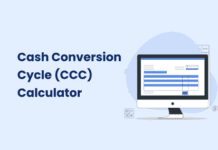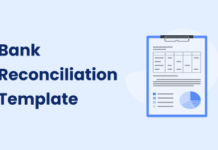Year-end closing can be a stressful period for finance and accounting teams alike. The manual process of collecting and reconciling transactional data usually takes up to 25 days.
To help you streamline the financial operations and get more work done, we will provide eight important steps for a successful year-end close. This blog is a guide for you to achieve a successful year-end close and ensure a stress-free holiday
Let’s get right into it.
What is Year-End Closing in Accounting?
Year-end closing in accounting is the crucial process of reviewing and updating a company’s financial records at the close of the fiscal year. This involves a thorough examination of financial transactions and ledgers from the past fiscal year to create a finalized financial record.
The process includes reconciling accounts, identifying any discrepancies, and making necessary adjustments to ensure that balances align between the bank’s records and the company’s accounting records.
Businesses must identify necessary adjustments, review financial statements, and prepare for audits, making the year-end close a time-consuming and challenging task. Careful planning, organization, and dedication are essential to complete the process accurately and on time.
Unlike the calendar year that runs from January 1st to December 31st, the fiscal year is a 12-month period that can begin on any date a business is registered. This flexibility allows business owners to choose a year-end closing date aligned with industry standards and business objectives.
While year-end closing is a recurring task, it presents significant challenges for accounting teams, increasing their already demanding workload and causing additional stress. The next section will delve into the reasons why closing the financial year can be a difficult task for accounting teams.
Why is Year-End Closing So Challenging?
Year-end closing is the process of reconciling and updating a company’s financial reports at the end of the fiscal year. This includes collecting payments and invoices, matching the employees’ information, and inputting the data into spreadsheets.
With so many tasks at hand, it’s a given that errors might occur during the manual reconciliation process, such as:
- Missing files: Without a centralized system to store and manage data, keeping track of paper receipts and invoices can be challenging.
- Ineffective communication: Finance teams often find themselves asking other departments to submit expense receipts or clarify certain purchases. This can lead to long and inefficient email threads.
- Inaccurate records: Manual data entry is a tiring and error-prone task, potentially resulting in false records.
- Volume of Data: The complexity of the year-end close process arises from the substantial volume of financial records that need meticulous review and analysis.
Year-end closing can be challenging due to other factors such as managing transactions across multiple legal entities, dealing with complex transactions, lack of standardization, reliance on manual processes, and meeting compliance requirements.
Step-by-Step Year-End Closing Checklist to Close Books Faster
Fortunately, there are ways to work around year-end accounting issues.
In this section, we’ll go over eight necessary steps to make the financial closing process a breeze.
1. Prepare and Analyze Financial Statements
Financial statements let you understand the company’s overall health based on past and current transactions.
Not only that but examining historical performance is also helpful when it comes to forecasting your financial future and planning for the upcoming year.
To start the year-end close, prepare and analyze these financial statements:
- Profit and loss. Sum up the total revenue and expenses the business incurred in a year.
- Cash flow. Calculate the amount of cash inflows and outflows. This statement is crucial to see whether your company makes enough money to cover operating expenses.
- Balance sheet. Report the company’s liabilities, assets, and shareholder equity.
2. Collect and Record Invoices and Receipts
Before closing the book, it’s crucial to collect and record data on the company’s incoming and outgoing transactions throughout the year. Start by inspecting the month-end closing books and asking other divisions to submit their financial records.
For instance, the marketing department should submit both sales reports and their expenses for ads, tools, and business trips.
In addition, the HR team must provide cost reports on recruitment, payroll, and taxes. Once collected, input those files into spreadsheets or your accounting software.
The problem is most tools do not provide the ability to scan and convert documents into editable text. You need to manually upload invoices and receipts one by one, which is ineffective and prone to errors.
Some accounting software provides automatic data capture to save time. However, the rate of data mismatch is still above 50%, requiring accountants to do another check.
For larger companies dealing with data abundance, consider using accounts payable and receivable automation software. Employees can simply scan and upload their invoices and receipts, accelerating the data collection process.
3. Review Inventory and Stocks
The next step involves determining the value of your company’s assets, including inventory and physical stocks.
Collaborate with the warehouse department to know the exact number of materials and supplies left. Also, ask the general affairs team to provide data regarding office supplies.
If the company has expired goods, count the total value and mark them as unplanned expenses in the year-end accounting books.
After collecting the required data, check whether they’re in line with the asset reports on your accounting software. While this manual process might be time-consuming, it helps you identify inventory shrinkage and discrepancies, which will benefit your reconciliation process.
4. Reconcile All Transactions and Accounts
After collecting the required information, verify the accuracy of your balance sheet by reconciling all accounts. It’s also important to match your month-end and year-end payroll expenses before submitting yearly income taxes.
This is crucial to identify any errors, discrepancies, and fraud that can hamper the financial health of your business.
Most finance teams still use spreadsheets to compare their financial records with bank accounts and credit card statements. That means scrolling through tons of rows and columns to make sure everything matches.
If you’re dealing with hundreds of transaction records, errors like incorrect transaction amounts and duplicated bills are more likely to occur. You may use accounts receivable and payable software that includes data accuracy checking and error-flagging functions as a solution.
5. Compare Accounts Payable and Receivable
If the records don’t follow the bank statements, identify the causes by comparing accounts payable and receivable.
Most accounting tools require finance teams to manually match customer invoices with payments received, and vendor bills with payments made. After finding the error source, they have to adjust the balance sheet accordingly.
To ensure no mistake or fraud has been committed, accountants need to repeat this process over and over again. As such, manual workflows take a huge chunk of your time better spent on other essential tasks, leading to lower productivity. This is where automation can come in handy.
6. Review Accounts Receivable
Accounts receivable specialists must check for past-due bills before the year-end closing procedure. If there are any, contact the customers and encourage them to pay as soon as possible.
Without a centralized dashboard, this means chasing payments through long email threads, which are hard to track.
When failing to receive payments, add the owed amounts as credits and debits on your income statement and balance sheet respectively. This will help you start a new accounting book with the correct information.
7. Review Accounts Payable
On the other hand, accounts payable teams need to check whether the company has paid its financial obligations to vendors, employees, and contractors.
The process usually involves tracking all expenses, finding bills as proofs inputting them on spreadsheets, and chasing other departments for missing documents. For large corporations with a complex organizational structure, this can take quite some time.
Set a firm deadline to motivate your staff to complete all outstanding duties as soon as possible. When the due date has passed but the debt remains unpaid, record it as a liability on the balance sheet.
8. Account for Taxes or Other Entitlements
The last step in your year-end closing process is checking for any tax deductions, exemptions, or credits the company receives. Also, look for private grants, gifts, and other types of entitlements from vendors, clients, and business partners.
If you’re using spreadsheets, open each month-end document to track all this data and calculate the total value. Then, list them as other income on your income statements.
Why is Having an Accounting Checklist Beneficial?
A year-end accounting checklist is crucial for several reasons, especially for business owners looking to enhance the organization and efficiency of their financial processes. Here’s why such a checklist is important:
- A checklist provides a structured framework for reviewing and completing key accounting tasks. It helps ensure that all necessary steps are taken in an organized manner, reducing the likelihood of overlooking critical financial activities
- With a checklist, business owners can systematically go through each task, confirming that all necessary financial transactions and activities are accounted for. This helps in achieving a comprehensive and accurate representation of the company’s financial status for the entire fiscal year.
- The checklist serves as a guide to streamline workflows. By following a predefined set of steps, businesses can complete year-end accounting tasks more efficiently, saving time and resources. This efficiency is particularly important during a period that can be demanding due to the volume of tasks involved.
- Year-end accounting often involves meeting various regulatory and compliance requirements. A checklist helps ensure that all necessary documentation and reports are prepared, contributing to compliance with tax regulations and other financial standards.
- Year-end financial statements are crucial for assessing the company’s performance and making informed decisions. An accounting checklist aids in the preparation of these statements, facilitating a more accurate analysis of the business’s financial health and enabling strategic planning for the future.
- Many businesses undergo external audits at the end of the fiscal year. A well-prepared checklist ensures that all relevant financial records are in order, making the audit process smoother and reducing the risk of potential issues.
- Going through a comprehensive checklist allows business owners to reflect on the financial year, identify areas for improvement, and strategize for the future. It provides a foundation for setting financial goals and making informed decisions in the upcoming fiscal year.
Kickstart Your Finance for the Next Year with Peakflo
With so many tasks to complete, the year-end closing can prevent your team from finishing other projects.
Thankfully, Peakflo offers several features that will help you streamline year-end closing:
-
- Accounting software integrations. Sync customers’ contacts, outstanding invoices, taxes, and credit notes seamlessly between Peakflo and other accounting tools. These include Xero, Quickbooks, CSV, and NetSuite.
- Optical Character Recognition. Our OCR technology makes it easy to scan invoices and receipts for easy database entry with high accuracy.
- Automated workflows. Easily send invoice reminders through communication channels like WhatsApp, SMS, and email. Create collection and payment reconciliation rules to speed up tasks and boost productivity by 50%.
- Auto-reconciliation. Peakflo automatically syncs all your data, then matches incoming payments with outstanding invoices and outgoing payments with vendor bills, streamlining the reconciliation process.
- Auto-disbursement. Activate static or dynamic virtual accounts for instant reconciliation. Pay off local and international bills securely using a digital wallet and receive payments straight to your bank account.
- Unique customer portal. Leverage a self-serve portal for customers to view and clear invoice payments quicker
- Cash flow management. By accessing and analyzing real-time, AI-powered finance reports and predictions, CFOs and finance leads can make strategic decisions and plan better for the future.
So, are you ready to enhance the year-end accounting process? Integrate your accounting software with Peakflo today.









![Why AI Sales Calls Are Making Good Sales Reps Even Better [2025 Guide] ai sales calls](https://cdn-kmjmp.nitrocdn.com/YvtqmrsiHUxqerlSiZgbfzqqTARWTElr/assets/images/optimized/rev-834053b/blog.peakflo.co/wp-content/uploads/2025/09/65168cf6-3001-4733-8cbc-12d5684cf449-218x150.webp)

































